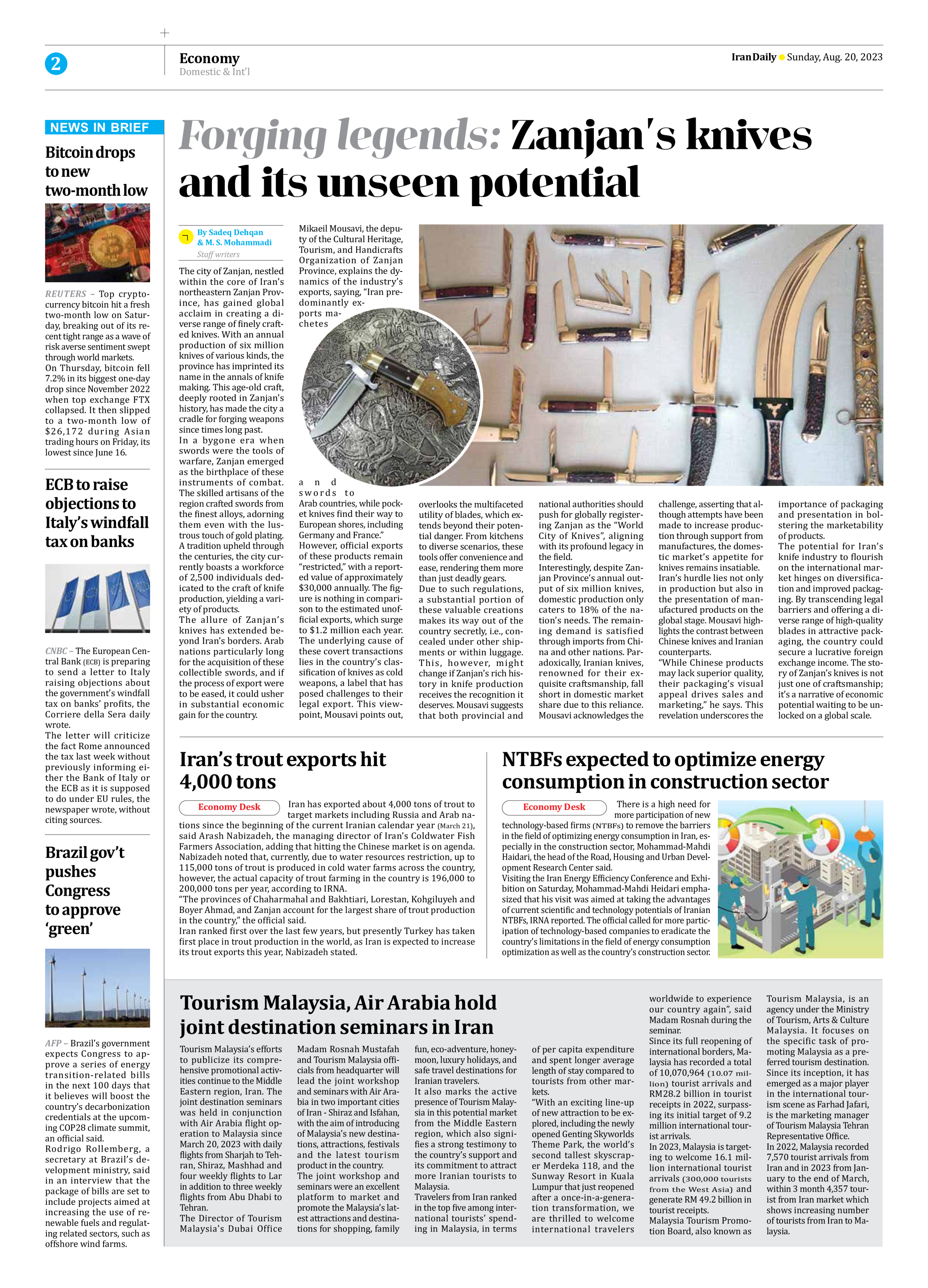
Forging legends: Zanjan’s knives and its unseen potential
By Sadeq Dehqan
& M. S. Mohammadi
Staff writers
The city of Zanjan, nestled within the core of Iran’s northeastern Zanjan Province, has gained global acclaim in creating a diverse range of finely crafted knives. With an annual production of six million knives of various kinds, the province has imprinted its name in the annals of knife making. This age-old craft, deeply rooted in Zanjan’s history, has made the city a cradle for forging weapons since times long past.
In a bygone era when swords were the tools of warfare, Zanjan emerged as the birthplace of these instruments of combat. The skilled artisans of the region crafted swords from the finest alloys, adorning them even with the lustrous touch of gold plating. A tradition upheld through the centuries, the city currently boasts a workforce of 2,500 individuals dedicated to the craft of knife production, yielding a variety of products.
The allure of Zanjan’s knives has extended beyond Iran’s borders. Arab nations particularly long for the acquisition of these collectible swords, and if the process of export were to be eased, it could usher in substantial economic gain for the country.
Mikaeil Mousavi, the deputy of the Cultural Heritage, Tourism, and Handicrafts Organization of Zanjan Province, explains the dynamics of the industry’s exports, saying, “Iran predominantly exports machetes and swords to Arab countries, while pocket knives find their way to European shores, including Germany and France.”
However, official exports of these products remain “restricted,” with a reported value of approximately $30,000 annually. The figure is nothing in comparison to the estimated unofficial exports, which surge to $1.2 million each year. The underlying cause of these covert transactions lies in the country’s classification of knives as cold weapons, a label that has posed challenges to their legal export. This viewpoint, Mousavi points out, overlooks the multifaceted utility of blades, which extends beyond their potential danger. From kitchens to diverse scenarios, these tools offer convenience and ease, rendering them more than just deadly gears.
Due to such regulations, a substantial portion of these valuable creations makes its way out of the country secretly, i.e., concealed under other shipments or within luggage. This, however, might change if Zanjan’s rich history in knife production receives the recognition it deserves. Mousavi suggests that both provincial and national authorities should push for globally registering Zanjan as the “World City of Knives”, aligning with its profound legacy in the field.
Interestingly, despite Zanjan Province’s annual output of six million knives, domestic production only caters to 18% of the nation’s needs. The remaining demand is satisfied through imports from China and other nations. Paradoxically, Iranian knives, renowned for their exquisite craftsmanship, fall short in domestic market share due to this reliance. Mousavi acknowledges the challenge, asserting that although attempts have been made to increase production through support from manufactures, the domestic market’s appetite for knives remains insatiable.
Iran’s hurdle lies not only in production but also in the presentation of manufactured products on the global stage. Mousavi highlights the contrast between Chinese knives and Iranian counterparts.
“While Chinese products may lack superior quality, their packaging’s visual appeal drives sales and marketing,” he says. This revelation underscores the importance of packaging and presentation in bolstering the marketability of products.
The potential for Iran’s knife industry to flourish on the international market hinges on diversification and improved packaging. By transcending legal barriers and offering a diverse range of high-quality blades in attractive packaging, the country could secure a lucrative foreign exchange income. The story of Zanjan’s knives is not just one of craftsmanship; it’s a narrative of economic potential waiting to be unlocked on a global scale.







